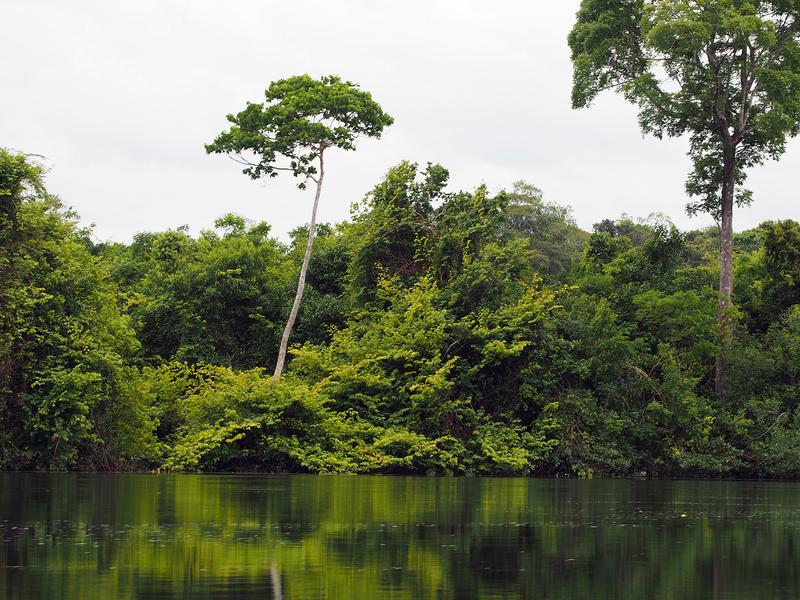
Discover 40,000 Tree Species in Tropical Forests

Riverbanks in the Brazilian rainforest are characterized by various tree species. According to a new study, the forests in the Indo-Pacific region are as rich in tree species as the American tropics.
Michael Weling, Max Planck Institute for Chemie
In a major project, researchers from 43 countries determined the number of tropical and subtropical tree species. Based on mapping and extrapolation, they estimate that there are 40,000 to 53,000 species worldwide.
Florian Wittmann from the Max Planck Institute for Chemistry was also involved in the study now published. Wittmann, who has been doing research in Manaus in Brazil for years, says: “In the flooded forests in the Amazon region alone, we have been able to determine more than 800 tree species. Many of them are extremely rare, and therefore also highly endangered.”
The tree expert is particularly surprised, however, by the diversity of species in the Indo-Pacific region. In contrast to previous assumptions, scientists have now found that the Indo-Pacific region, with 19,000-25,000 species, is as rich in species as the Central and South American forests. From previous studies, Wittmann and his colleagues had already discovered that around 16,000 tree species grow in the Amazon region.
The tropics of Africa, in contrast, with 5,000 tree species, have only a relatively low diversity. Worldwide, the new study arrives at a total number of 40,000-53,000 tropical tree species. Very few species occur concurrently in Africa, America and the Indo-Pacific area. In comparison, there are just 124 different tree species in Central Europe.
For their study, researchers in a total of 207 locations from Mexico to Africa to Australia determined the types and the amount of trees that grow there. Since on the one hand the locations are typical of vegetation for a larger area, but of different sizes, on the other, the international team had to standardize the counts at the various locations.
To this end, the researchers designed an area grid, with the size of a degree in geographic latitude and longitude across the continents, and projected the numbers for a location onto the standardized grid. They then multiplied this value with a specific factor, known as Fisher's Alpha Factor. From the species density determined for a standardized area, this factor enables determination of the number of tree species in an area such as the South American tropical forests.
Although these extrapolations still possess an element of uncertainty, it provides the first reliable numbers on tree species in the tropics. Previous estimates were based primarily on plant collections in herbariums. These estimates are less accurate, since often too much was collected in some regions, but too little in others.
They want to know the number of tree species in the world’s tropical forests as precisely as possible, because biodiversity is a major ecological factor. “Trees are extremely important for healthy ecosystems, since many animal and plant species depend on them”, the Max Planck researcher says. “For example, numerous insect species live on a single tree.” Florian Wittman also suspects that pharmacologically interesting substances can be obtained, in the future, from numerous of the still unknown tree species. He estimates that in the coming years the results of this study could be the basis for further beneficial protection programs. (SB/PH)
Original publication:
An estimate of the number of tropical tree species,
J.W. Ferry Slik et al, Proceedings of the National Academy of Sciences, 2015, doi: 10.1073/pnas.1423147112.
http://www.mpic.de/en/news/press-information/news/mindestens-40000-baumarten-in-…












